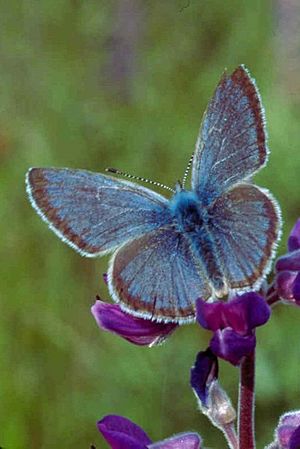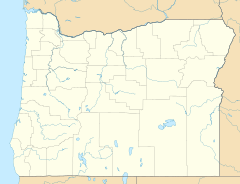Baskett Slough National Wildlife Refuge facts for kids
Quick facts for kids Baskett Slough National Wildlife Refuge |
|
|---|---|
|
IUCN Category IV (Habitat/Species Management Area)
|
|
| Location | Polk County, Oregon, USA |
| Nearest city | Dallas, OR |
| Area | 2,492 acres (1,008 ha) |
| Established | 1965 |
| Governing body | U.S. Fish and Wildlife Service |
| Website | Baskett Slough NWR |


Baskett Slough National Wildlife Refuge is a special natural area in northwestern Oregon. It is about 10 miles (16 km) west of Salem in Polk County. This refuge was created in 1965 to protect important habitats for many animals.
The refuge covers 2,492 acres (10.09 km²). It includes different types of land like farmlands, forests, and grasslands. There are also shallow wetlands and permanent open water areas. These diverse habitats provide food and shelter for various wildlife. The U.S. Fish and Wildlife Service manages the refuge.
The refuge is located near the Oregon Coast Range foothills. It is also close to the wide Willamette Valley. This valley has mild, rainy winters, which is perfect for birds that spend winter there. Long ago, the valley had many wetlands and marshes. Today, much of it is farmland and cities. This makes the refuge even more important for wildlife.
Contents
Wildlife at the Refuge
Baskett Slough National Wildlife Refuge helps protect many animals. Its main goal is to provide a good winter home for geese. This is especially true for the dusky Canada goose. These geese have small summer and winter homes. They nest in Alaska and spend almost all winter in the Willamette Valley.
- Dusky Canada Geese: Unlike most other Canada geese, dusky Canada geese are special. They travel from Alaska to the Willamette Valley for winter. The refuge helps them rest and get ready for their long journey back. Their numbers have gone down due to habitat loss and other reasons. The refuge helps keep their population healthy.
- Winter Visitors: Many geese, swans, and ducks visit the refuge in winter. In 2001, a survey counted nearly 36,000 of these birds.
- Resting Areas: Geese need quiet places to rest. This helps them save energy for their long migrations and nesting. Because of this, most of the refuge is closed to visitors from October 1 to April 30. This gives the geese the peace they need.
Other Animals You Might See
The refuge's mix of habitats is home to many different species.
- Birds: You can see many types of ducks in winter. These include cinnamon teal, mallards, bufflehead, and hooded mergansers. Great blue herons and other shorebirds look for food along the water. Red-tailed hawks fly overhead. A few bald eagles also spend the winter here.
- Other Wildlife: Besides birds, the refuge has many other animals. There are 30 types of mammals, 8 types of amphibians, and 10 types of reptiles.
The Fender's Blue Butterfly
The refuge is very important for the Fender's blue butterfly. This butterfly is an endangered species. Baskett Slough National Wildlife Refuge has the largest group of these butterflies left. They live in the oak savanna habitat. These butterflies need a special plant called Kincaid's lupine to survive. This plant is also a threatened species. The refuge works to restore and expand these important habitats.
Visiting the Refuge
Baskett Slough National Wildlife Refuge welcomes visitors. It's a great place to learn about nature and see wildlife.
- Information Kiosk: You can find an information kiosk on the north side of Oregon Route 22. It's about 2 miles (3.2 km) west of the intersection with Oregon Route 99W.
- Walking Trails: The refuge has about 5 miles (8 km) of walking trails.
- The Baskett Butte Loop Trail is open all year.
- The Morgan Lake and Inter-Tie Trails are open from April 1 to September 30.
- Hours and Rules: The refuge is open only during daytime hours. To protect the wildlife, hunting and fishing are not allowed.
The refuge was named after George J. Baskett. He was an early settler in the Willamette Valley and raised thoroughbred horses.
|



